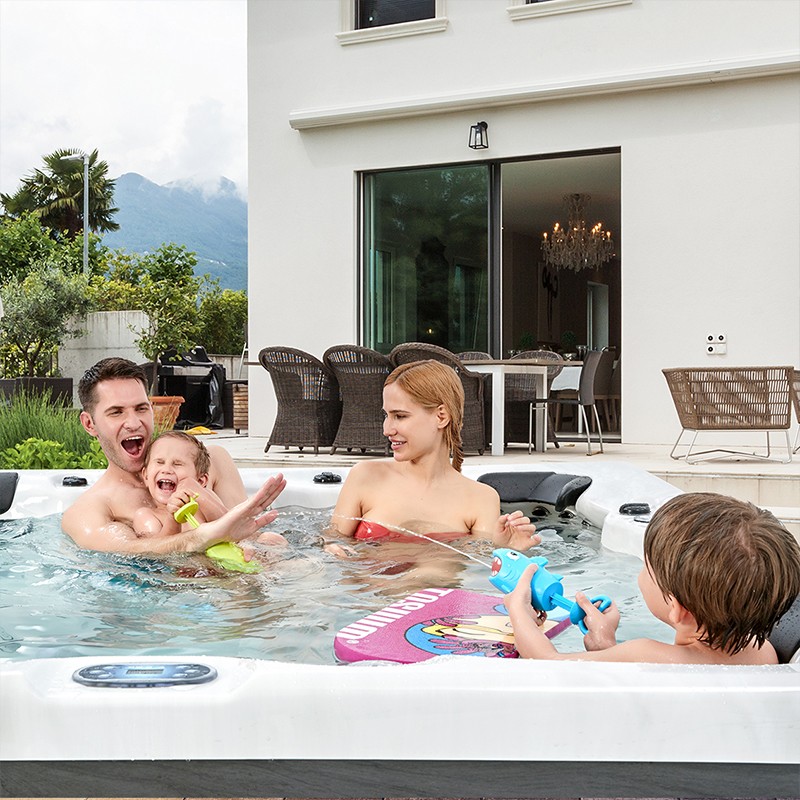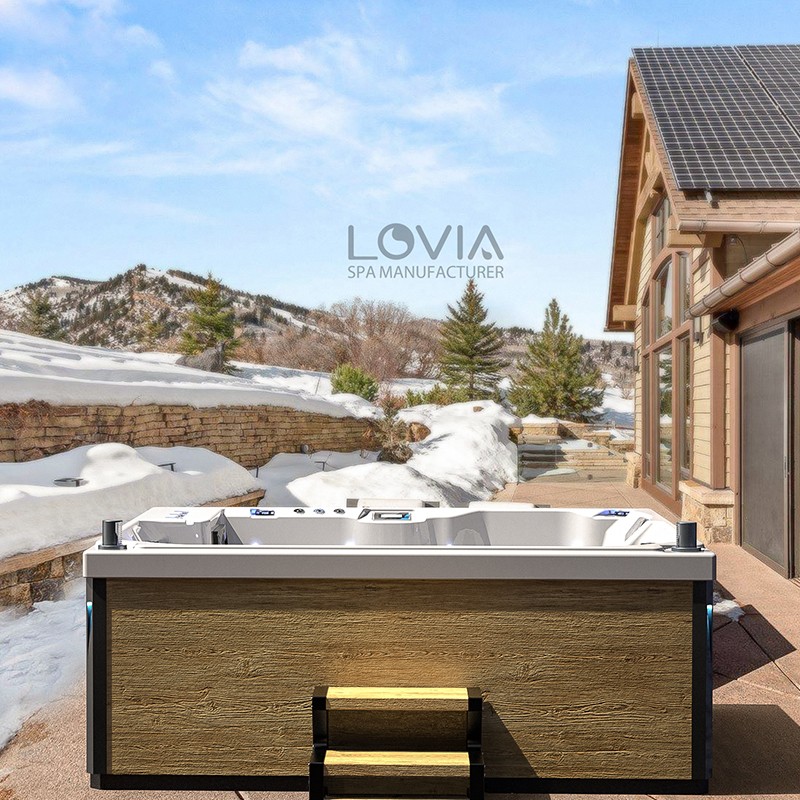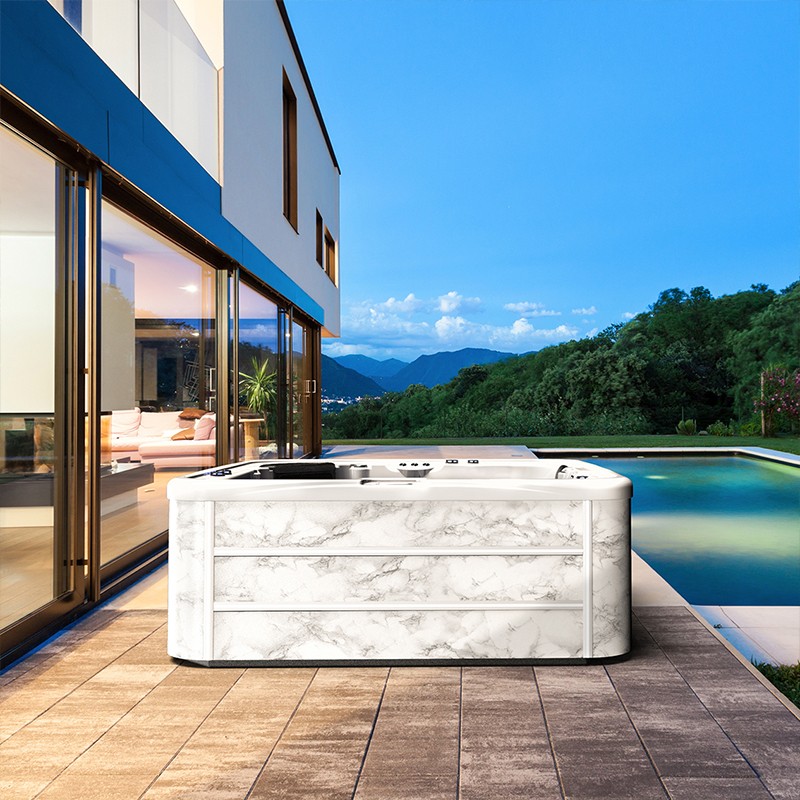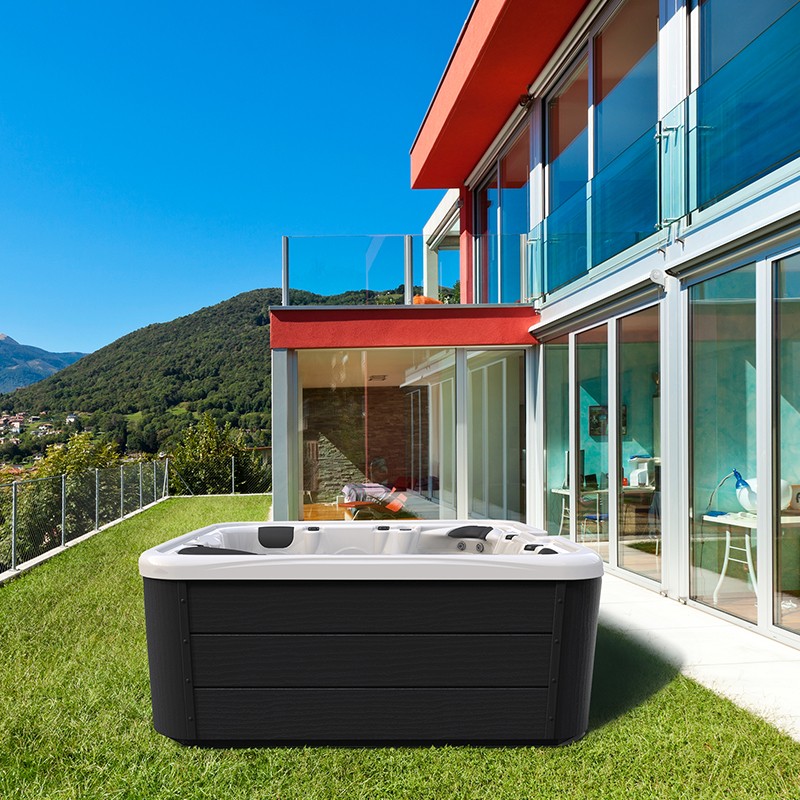
What is the energy efficiency of outdoor spa hot tubs?
2025-07-14 15:30In today's comfortable lifestyle, outdoor spa hot tubs have become a popular facility for relaxation, physical therapy and socializing in many families. However, as energy costs continue to rise, consumers are increasingly concerned about their operating costs and energy efficiency.
What is the energy efficiency of outdoor spa hot tubs? In this article, we will comprehensively analyze this issue from multiple angles, including structural factors, heating mechanisms, thermal insulation performance, usage habits, energy types and energy-saving design.

Outdoor spa hot tub: What is "energy efficiency"?
Energy efficiency refers to the ratio between the energy consumed per unit time and the output heat, temperature maintenance and equipment operation under the premise of completing the given functions of the system. For outdoor spa hot tubs, the efficiency is reflected in the following aspects:
· Whether the insulation effect is good (whether a large amount of heat is lost)
· Whether the heating system is fast and efficient
· Whether the control system is intelligent and energy-saving
· Whether the material structure reduces heat loss
· Whether excessive operation is avoided during use
In short, an outdoor spa hot tub with high energy efficiency means: Under the premise of providing the same temperature and massage experience, it consumes less energy and runs more economically.

Outdoor spa hot tub: What are the components of energy consumption?
1. Energy consumption of the heating system
The heater is the part with the highest energy consumption. It takes about 3 to 8 hours to heat the water from normal temperature (such as 15°C) to a comfortable use temperature (about 37~40°C), depending on the volume of the bathtub, the initial temperature, and the heating power. Generally speaking:
· A large outdoor spa hot tub with 5-7 seats is equipped with a 4kW-6kW electric heater;
· A small two-person bathtub may use a 1.5kW~3kW electric heater.
The energy consumption for a single heating can reach 10~25 kWh, and the consumption for maintaining constant temperature is relatively low, usually 1~2.5 kWh/hour.
2. Energy consumption of circulation pump and massage pump
The pump system is used to circulate water quality, maintain hygiene and provide bubble massage function:
·The energy consumption of the circulation pump is between 100W~300W, but the running time is long (it may run intermittently throughout the day);
·The massage pump starts when the nozzle is turned on, the power is usually 1-2.5 kW, but the use time is short (usually 15-30 minutes each time).
3. Energy consumption of controller and lighting system
This part of energy consumption is lower, but it is still part of continuous operation. LED lighting and electronic control panels usually consume less than 50W of electricity, and may contribute 20~50kWh in total throughout the year.

What is the energy efficiency of outdoor spa hot tub related to?
1. Thermal insulation system design
The thermal insulation performance of outdoor spa hot tub is one of the most critical factors affecting energy efficiency. Common insulation measures include:
· Full-foam insulation structure (Full-foam Insulation): By filling the space between the bathtub and the shell with high-density polyurethane foam, heat loss is greatly reduced;
· Multi-layer reflective insulation layer: using aluminum foil to reflect radiant heat;
· Sealed bathtub cover: high-quality hot tub covers can prevent up to 70% of heat loss;
· Bottom insulation layer and skirt board are closed: prevent the invasion of cold air from the ground.
The quality of insulation design directly determines the amount of electrical energy required for temperature maintenance per unit time. Studies have shown that the insulation performance of hot tubs with full-foam insulation systems is more than 30% better than that of traditional hollow designs.
2. Material and manufacturing quality
The thermal conductivity of the shell, nozzle, and internal structural materials also affects heat loss. High-quality acrylic liner and glass fiber reinforcement layer are both strong and heat-insulating. The shorter and more compact the internal pipes, the less energy loss will be when the water is transported after heating.
3. The intelligence of the control system
· Intelligent thermostat can achieve time-sharing heating and night temperature maintenance;
· Energy-saving mode can reduce the target temperature for temperature maintenance when not in use;
· Temperature sensor reduces false heating;
· Remote control system allows users to schedule according to actual frequency of use.
The smarter the control system, the less energy waste it can reduce without sacrificing comfort.
4. Geographical and climatic factors
Large temperature differences in the outdoor environment, strong winds, and cold climates will increase the heat loss of the bathtub and reduce energy efficiency. For example, in the cold regions of Northern Europe or North America, energy demand is 20-50% higher than in temperate regions. In extreme climates, whether there is good enclosure, roof coverage, and wind shields will also greatly affect energy efficiency performance.
Comparison of outdoor spa hot tub performance with different energy efficiency levels
| Energy efficiency level | Average annual electricity consumption (estimated) | Main features |
| High energy efficiency (energy-saving type) | 1000~1800 kWh/year | Full foam insulation, intelligent control, energy-saving pump system, high-efficiency heater |
| Medium energy efficiency | 1800~2500 kWh/year | Partial foam insulation, ordinary controller, high-power pump without adjustment function |
| Low energy efficiency (traditional type) | 2500~3500 kWh/year | Basic insulation or no insulation, manual control, structural heat dissipation |
In the United States, most states encourage the purchase of outdoor spa hot tubs that are CEC (California Energy Commission) certified or EnergySmart™ certified, because these products generally have better energy efficiency performance.

How to reduce the energy efficiency of outdoor spa hot tubs?
Here are some effective energy-saving tips:
1. Maintain a constant water temperature and do not raise the temperature frequently
Frequently reheating completely cooled water will consume more energy than maintaining a constant temperature. Setting it at 37~38°C and keeping it covered will save more energy.
2. Install a high-quality insulated cover
The most serious part of heat loss is the top. A high-quality insulated cover can prevent 60~70% of heat from escaping.
3. Clean the filter and nozzle
When the water flow is blocked, the pump system needs more power to maintain circulation. Cleaning and replacing the filter can help reduce unnecessary energy consumption.
4. Choose daytime heating
Heating in a sunny outdoor environment, where the outside temperature is higher than at night, can help reduce the power required for heating.
5. Reasonable use of massage function
Although the massage nozzle is comfortable, it has high operating power. It is more reasonable to control the use time within 15~30 minutes.
Conclusion of typical energy efficiency of outdoor spa hot tub
Modern high-performance outdoor spa hot tubs usually consume between 1000 and 2500 kWh of electricity per year, and the energy efficiency depends on multiple factors such as insulation structure, heating system efficiency, pump system design and user habits.
| Metric Category | High efficiency bathtub | Low efficiency bathtub |
| Annual electricity cost (calculated at $0.15/kWh) | $150 ~ $375 | $375 ~ $525 |
| Typical daily operating hours | 1.5 ~ 3 hours | 3 ~ 6 hours |
| Recommended ambient temperature | ≥ 10°C | ≥ 15°C (otherwise heat dissipates quickly) |
If you are planning to buy or are using an outdoor spa hot tub, understanding its energy efficiency can not only help you save electricity bills, but also extend the life of the equipment and reduce carbon emissions. Combining high-quality equipment with scientific usage habits is the best balance between high energy efficiency and comfortable life.
Are your products available under other brands or only Lovia Spa?
While Lovia Spa is our flagship international brand, Guangzhou HuanTong Industrial also supports private labeling and OEM services for qualified clients. This means buyers can purchase spas and hot tubs that carry their own brand logos and customized packaging. Our factory’s flexibility in production allows for customized branding without compromising product quality or certification.
